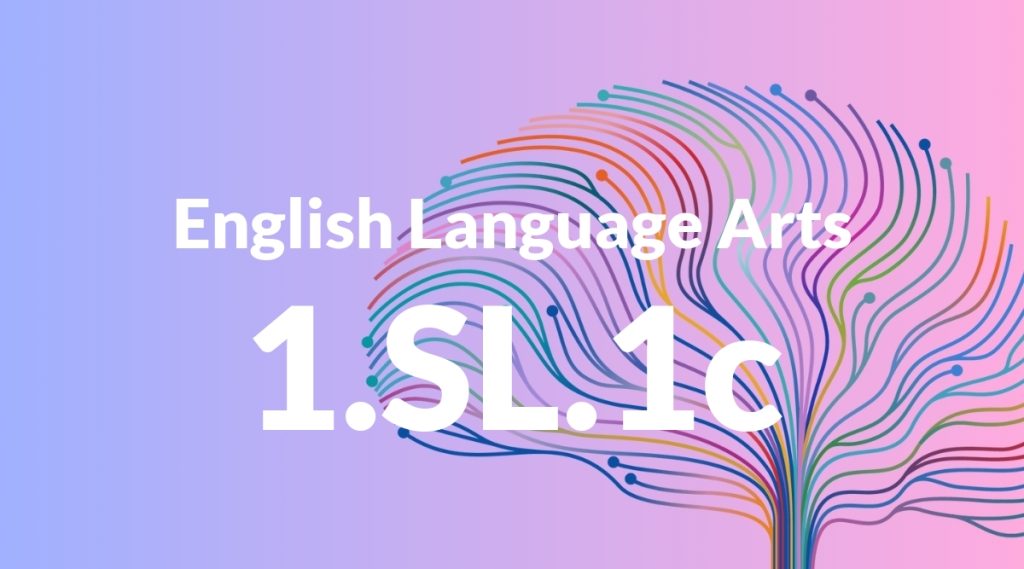Standard: 1.SL.1 – Participate in collaborative conversations with diverse partners about grade 1 topics and texts with peers and adults in small and larger groups.
Grade level: Grade 1
Subject: English Language Arts
Domain: Speaking & Listening
Teacher Overview
This standard emphasizes the importance of students participating in conversations with diverse partners about grade-level topics and texts. It helps students develop critical speaking and listening skills that are essential for effective communication and collaboration. Before tackling this standard, students should be able to listen attentively, follow simple instructions, and express their thoughts and feelings verbally.
After mastering this standard, students will be able to engage in more complex discussions, build on others’ ideas, and ask and answer questions to seek help, get information, or clarify something that is not understood.
Common Misconception 1
A common misconception is that students may think only their opinion matters in a conversation. This is incorrect because effective conversations involve listening to and valuing different perspectives.
Intervention 1
To address this misconception, teachers can use role-playing activities that highlight the importance of listening to others and valuing different perspectives.
Common Misconception 2
Another misconception is that students might believe they should speak all the time and not let others talk. This is incorrect because conversations require turn-taking and sharing the talking space.
Intervention 2
To remediate this misconception, teachers can use turn-taking games to emphasize the importance of sharing the talking space in a conversation.
Prerequisite Knowledge
Students should have basic listening skills, be able to follow simple instructions, and have some experience in expressing their thoughts and feelings verbally.
Subsequent Knowledge
Students will develop the ability to engage in more complex discussions, build on others’ ideas, and ask and answer questions to seek help, get information, or clarify something that is not understood.
Instructional Activities
- Role-playing different conversation scenarios
- Group discussions on a story read in class
- Turn-taking games
- Show-and-tell sessions
- Reading buddy activities




